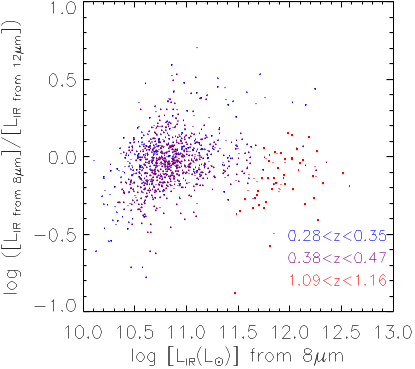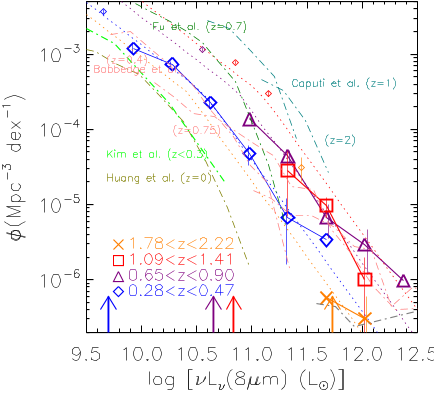




Did you find this useful? Give us your feedback













134 citations
50 citations
34 citations
...…have been possible for some time for high-z galaxies (e.g., Hughes et al. 1998; Chapman et al. 2005; Magnelli et al. 2013; Gruppioni et al. 2013; Goto et al. 2019), they do not yet provide significant insights at very high redshifts (z>∼ 6), nor for low-mass galaxies which have low SFRs and low…...
[...]
30 citations
17 citations
...…galaxy population also known as the cosmic evolution of the star formation rate density (SFRD), is well established up to redshift of ∼9 (e.g. Lilly et al. 1996; Schiminovich et al. 2005; Bouwens et al. 2011, 2014; Madau & Dickinson 2014; Hagen et al. 2015; Alavi et al. 2016; Goto et al. 2019)....
[...]
207 citations
198 citations
187 citations
...This may be qualitatively consistent with previous reports by Herschel that the dust attenuation peaks and declines at z>1.2 (Gruppioni et al. 2013; Burgarella et al. 2013)....
[...]
158 citations
...The L18W flux (Matsuhara et al. 2006) are used to apply the 1/Vmax method, because it is a wide, sensitive filter (but using the L15 flux limit does not change our main results)....
[...]
145 citations
...4.1 The 8µm LF We first present monochromatic 8µm LFs, because the 8µm luminosity (L8µm) has been known as a good indicator of the TIR luminosity (Babbedge et al. 2006; Huang et al. 2007; Goto et al. 2011a)....
[...]
...This is a common exercise with the limited depths of the current IR data (Babbedge et al. 2006; Caputi et al. 2007)....
[...]
The L18W flux (Matsuhara et al. 2006) are used to apply the 1/Vmax method, because it is a wide, sensitive filter (but using the L15 flux limit does not change their main results).
Mid-infrared (mid-IR) is one of the less explored wavelengths due to the earth’s atmosphere, and difficulties in developing sensitive detectors.
Uncertainties of the LF values includefluctuations in the number of sources in each luminosity bin, the photometric redshift uncertainties, the k-correction uncertainties, and the flux errors.
It has the largest FoV among optical cameras on 8m-class telescopes, and can cover the AKARI NEP wide field (5.4 deg2) with only 4 FoV (Fig.1).
even with AKARI’s sensitivity, the observation might not be deep enough to reliably measure the faint-end slope of 12µm LFs, possibly because 12µm does not contain as luminous emission lines as in the case of 8µm.